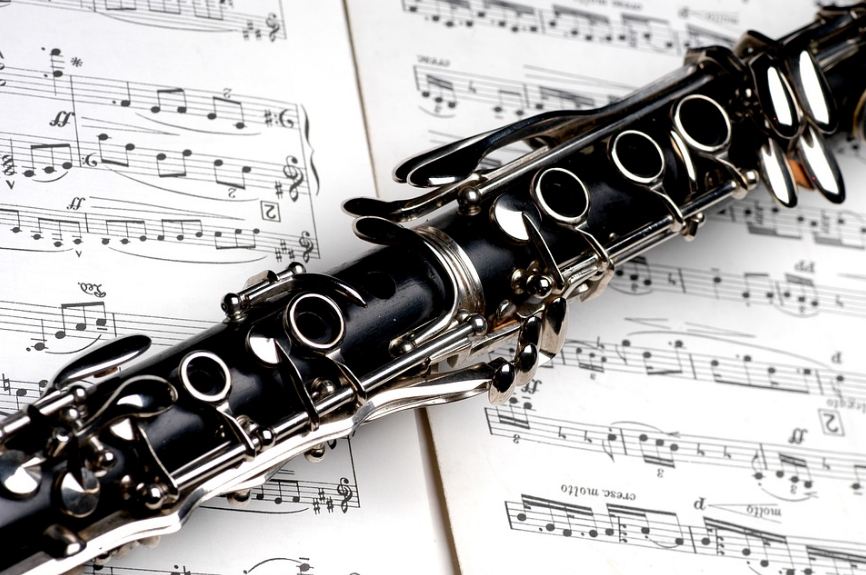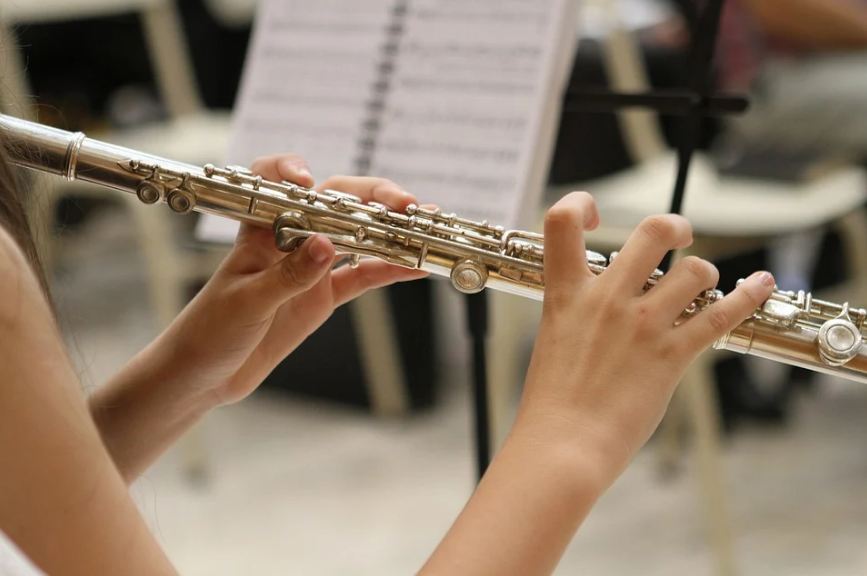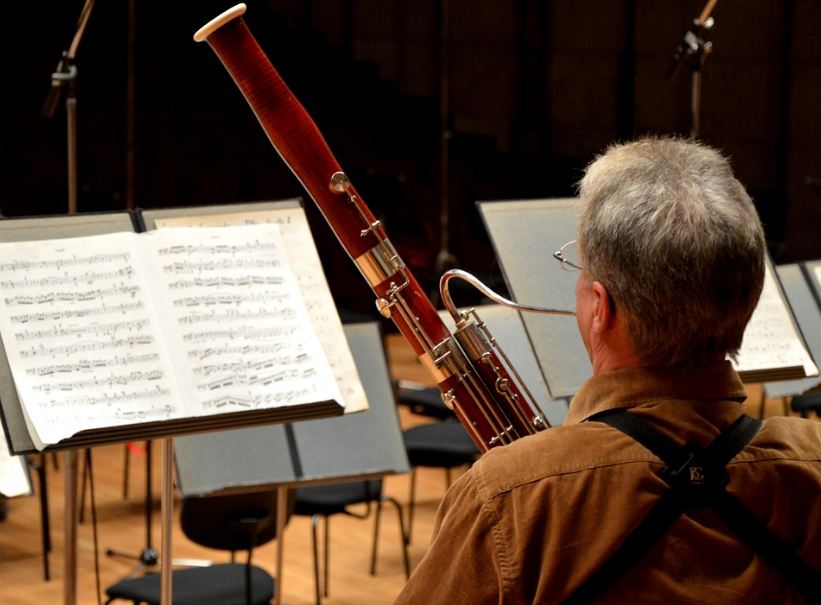The woodwind family of instruments is a subgroup of the more general category of wind instruments. In this family, there are two main types of instruments, which are reed instruments and flutes. Reed instruments are considered woodwind due to the way they make their sound. They split the air stream of the player on a sharp edge, such as a reed.
There are also many people who are confused with the name “woodwind.” They think the instruments should be made exclusively from wood. Today, woodwind instruments can be made from different materials, such as wood, cane, brass, platinum, gold, or silver. Before, they used to be all made of wood, which gave them their name.
Woodwind instruments are popular among beginners and professional players, including hobbyists. In fact, a lot of young band students begin their musical careers on woodwind instruments. These instruments are featured in all types of music, from classical and orchestral pieces to jazz to blues to rock and roll and everything in between.
There are six major instruments that belong to the woodwind family of instruments, namely flutes and piccolos, saxophones, clarinets, oboes, bassoons, and English horns. In addition to these, there are also recorders and modern electronic wind instruments available today. If you want to learn more about them, read on as we’re giving you the ultimate guide to woodwind instruments.
Why “Wood” Wind?
Back in the early 1900s, Erich Moritz von Hornbostel from Austria and Curt Sachs from Germany worked together to create a classification system of musical instruments. The eponymic Hornboster-Sachs system is widely used today by ethnomusicologists. It includes five broad classifications and many sub-classifications dividing almost every type of instrument into a category based on how it creates sound.
In that system, all woodwind and brass instruments come from the same tree. All from tubas to piccolos fall under two parent categories, which are aerophones and non-free aerophones. Aerophones are instruments that produce sounds by vibrating air. Non-free aerophones, on the other hand, have vibrating air contained in the instrument.
As the category branches out, three distinct families of instruments are formed, which are flutes, reed instruments, and brass instruments.
Flutes are edge-blown aerophones in which the player creates a ribbon-shaped flow of air with their lips or breath directed through a duct against an edge. Reed instruments are aerophones in which the breath of the player is directed against a lamella or a thin layer, interrupting the airflow and causing the air to move. Brass instruments are trumpets, wherein the vibrating lips of the player set the air in motion. Therefore, it is called woodwind not because of the materials they are made of but because of the way a musician produces sound on them.
Also, clarinets and flutes used to be made of wood and were fittingly named woodwinds. Saxophones, bassoons, and oboes all have the same ancestral reed setups and fingering methods to clarinets. Therefore, they have also been categorized under woodwind instruments.
The Woodwind Family
The woodwind family of instruments is broad and has thousands of models from many manufacturers. Therefore, if you are looking into buying one, it is better to research first and understand your playing level and style. Here are the different instruments that belong to the woodwind family to give you more ideas:
1. Flute
Among the instruments that produce pitched sounds aside from rhythms, the flute is the oldest. It was originally made from clay, wood, stone, or hollow reeds such as bamboo. At the present time, modern flutes are made of platinum, gold, or silver. In an orchestra, there are generally 2 up to 4 flutes.
A standard flute is a bit more than 2 feet long, and it is usually featured playing the melody. To play the flute, you need to hold it sideways using both of your hands. You will blow across a hole in the mouthpiece. Your fingers will then open and close the keys to change the pitch.
- Piccolo: This one is a shorter version of the flute, and it means small in Italian. It is half the size of a standard flute, and it plays the highest notes of all the woodwind instruments. One of the flute players in the orchestra will also play piccolo if needed. In addition to that, the high piping sound of the piccolo can also be heard in traditional drum groups and marching band music.
If you want to learn more about flutes, you can read the following articles:
2. Oboe
An oboe is a two-foot-long black cylinder with metal keys covering the holes. It has a mouthpiece that uses a double reed, and it vibrates when you blow through it. The vibration of the reed makes the air inside the instrument move, resulting to sound.
To play the oboe, you need to hold it upright and blow through its double reed. Use both of your hands to press down its keys to open and close the holes and change pitches. Oboes can create warm, velvety smooth notes and as well as haunting sounds. The first oboist is also responsible for tuning the orchestra before each concert. This is why before the music starts, a special note will be played by the oboist first.
If you want to learn more about this woodwind instrument, you can read our Guide to Oboe the Family.
3. English Horn
The English horn is closely related to the oboe. Even though it is called an English horn, it is actually not English, and it is not a horn. This instrument also uses a double reed and is played in the same manner as that of an oboe. However, it is longer and has a wider tube. The bottom end of the English horn opens out into a rounded bell shape, letting it create a warmer and fuller sound.
Since an English horn is larger, it has a lower pitch range compared to an oboe. But an oboe player can also play an English horn if needed.
4. Clarinet
The clarinet is also sometimes mistaken for an oboe, but it has a different mouthpiece that uses a single reed. Clarinets have different sizes, and the standard one is a bit more than 2 feet long. There are some musical works that need the clarinetist to play different types of clarinets in the same piece. In an orchestra, 2 to 4 clarinets play both melodies and harmonies.
Clarinets have a dark rich sound in their lower notes, while their upper part of the range is resonant and bright. You by a clarinet by holding it upright and blowing through the reed. Your hands are used to change the pitches by opening and closing the keys with your fingers.
- E-flat Clarinet: An E-flat clarinet is similar to the standard clarinet, but it is about half its length. Its short size enables it to play higher notes.
- Bass Clarinet: A bass clarinet is considered the grandfather of the clarinet family. It is big, and its top and bottom are bent, so it is easy for musicians to hold and play. Its length enables it to play some of the lowest notes in the orchestra.
5. Bassoon
The bassoon is a long pipe that is made of wood and features many keys. It has a bend that makes it possible for musicians to comfortably play it. If this instrument is straight, it would be around 9 feet long. It also uses a double reed, which is placed into a curved metal mouthpiece. In an orchestra, there are 2 to 4 bassoons, and they have a comparable range to that of the cello.
Bassoons usually play lower harmonies, but their hollow low notes can sometimes be heard in a melody. To play it, you need to hold it upright and blow through the double reed. You also need to use both of your hands to press on the keys to open and close the holes and alter the pitch.
- Contrabassoon: A contrabassoon is also a bassoon that has a wider pipe. It is the grandfather of the wind section, and it is much larger than a standard bassoon. In fact, its tube is doubled over twice to enable the player to hold it. A lot of breath is needed to make sound come out from its long pipe. It plays the lowest notes in the whole orchestra.
To learn more about this instrument, you can read our Guide to Bassoons.
6. Saxophones
There are different kinds of saxophones out there. One of those is the soprano, which has a higher pitch, making it challenging for a new player to control. It plays similar parts to a clarinet, but it has a brighter and clearer sound. Most of the time, soprano saxophones are used in jazz and classical genres.
Another kind of saxophone is the alto, which is great for beginners. Its size is easier to hold, and it has a smaller mouthpiece that is perfect for players without a developed embouchure. This type of saxophone is in the key of Eb and is usually found in school ensembles. When you start to have a good handle on alto saxophone, you can move to a tenor, soprano, or baritone. But many people prefer the sound of the alto and stick with it as their main instrument.
If you want to learn more about this instrument, you can read our Guide to Saxophones.
Conclusion
Woodwind instruments are indeed among the most popular when it comes to orchestras and marching bands. They create a variety of tones that adds to the beauty of the melody of different musical works. We hope that this guide helped you learn more about woodwind instruments. If you are looking for more information and instruments related to this, you can click on the following links:




